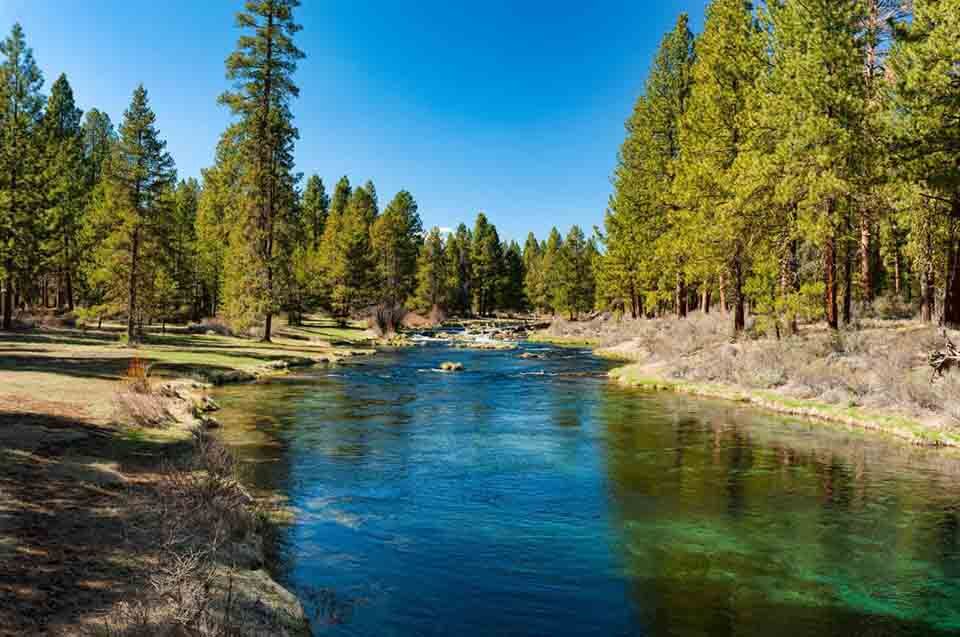Parched Klamath Basin Receives $72.7 million Lifeline

KLAMATH COUNTY, Ore. — The parched Klamath Basin, with its dwindling populations of Chinook, coho, and steelhead trout, has been given a $72.7 million lifeline by the U.S. Department of the Interior.
The much-needed funding will be utilized to modernize agricultural infrastructure and ecosystem restoration. The cash injection comes after months of negotiations between the farming sector’s Klamath Water Users Association (KWUA) and the Klamath, Karuk, and Yurok tribes.
Klamath Basin Tribes Sign Lifeline Funding Agreement
The new “memorandum of understanding” was signed in what the Department of the Interior describes as a level of cooperation that has not existed for many years.
In a press statement, Interior Secretary Deb Haaland says after months of discussions and consultations, the Department is proud of the new partnership in which irrigators and Tribes share a commitment to benefit:
- The abundant fish species and migratory birds unique to the Klamath Basin
- Agriculture
- Forests
- Watersheds
Related: Yurok Tribe Celebrates The Return Of Salmon To The Klamath Basin
How the Money Will Be Used
The $72.7 million grant will be spent as follows:
- $39 million to repair local economies and restore the regional ecosystem – an allocation that will fully pay for the Klamath Falls National Fish Hatchery by 2027. Endangered sucker fish, culturally significant to the Klamath Tribes, will be reared at the hatchery.
- $25 million will fund collaborative conservation efforts in the basin.
- $4 million will fund the 14,000-acre Upper Klamath National Wildlife Refuge, an Agency-Barnes wetland restoration project that will reconnect two units of Upper Klamath Lake. The project will increase wetland habitat for migratory waterfowl and fish passage and improve water storage capacities.
- $2.9 million is for wetland restoration projects and will be distributed between the Klamath, Yurok, Hoopa Valley and Karuk Tribes, and the Modoc Nation.
- $1.8 million is set aside for a feasibility analysis to modify water infrastructure and supply for the Klamath Drainage District.
Klamath Basin’s Battle Against Drought
The drought-stricken Klamath Basin has long been a battleground between farmers needing water for irrigation and Tribes fighting to save an endangered and dwindling fish species. Also in the fray are the six national wildlife refuges, home to migratory birds.
In 2021, the region suffered one of the worst droughts in its history, and the following year a drought emergency was declared in Klamath County for a third successive year by the Governor, Kate Brown.
Related: Loss Of Copco Lake Leaves Some Residents Reeling
The executive director of KWUA, Paul Simmons, says that signatories to the Memorandum Of Understanding (MOU) can now move forward as a unified front to address shared goals and common objectives. The KWUA and Tribes will meet within the next 30 days to identify short-term restoration projects that can be completed within the next two years. They must also submit a list of priority projects to the Department of the Interior within the next 60 days.
The executive director of KWUA, Paul Simmons, says that signatories to the Memorandum Of Understanding (MOU) can now move forward as a unified front to address shared goals and common objectives. The KWUA and Tribes will meet within the next 30 days to identify short-term restoration projects that can be completed within the next two years. They must also submit a list of priority projects to the Department of the Interior within the next 60 days.
References
https://www.doi.gov/ocl/klamath-river-basin
https://www.fisheries.noaa.gov/west-coast/habitat-conservation/klamath-river-basin
